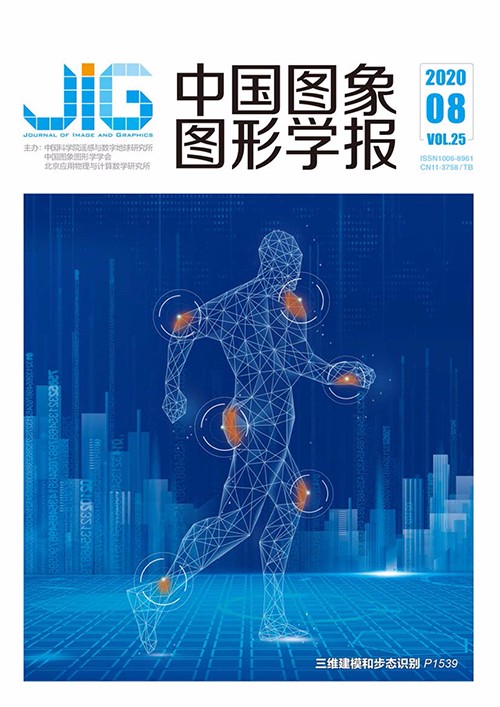
特征重用和注意力机制下肝肿瘤自动分类
摘 要
目的 肝肿瘤分类计算机辅助诊断技术在临床医学中具有重要意义,但样本缺乏、标注成本高及肝脏图像的敏感性等原因,限制了深度学习的分类潜能,使得肝肿瘤分类依然是医学图像处理领域中具有挑战性的任务。针对上述问题,本文提出了一种结合特征重用和注意力机制的肝肿瘤自动分类方法。方法 利用特征重用模块对计算机断层扫描(computed tomography,CT)图像进行伪自然图像的预处理,复制经Hounsfield处理后的原通道信息,并通过数据增强扩充现有数据;引入基于注意力机制的特征提取模块,从全局和局部两个方面分别对原始数据进行加权处理,充分挖掘现有样本的高维语义特征;通过迁移学习的训练策略训练提出的网络模型,并使用Softmax分类器实现肝肿瘤的精准分类。结果 在120个病人的514幅CT扫描切片上进行了综合实验。与基准方法相比,本文方法平均分类准确率为87.78%,提高了9.73%;与肝肿瘤分类算法相比,本文算法针对转移性肝腺癌、血管瘤、肝细胞癌及正常肝组织的分类召回率分别达到79.47%、79.67%、85.73%和98.31%;与主流分类模型相比,本文模型在多种评价指标中均表现优异,平均准确率、召回率、精确率、F1-score及AUC(area under ROC curve)分别为87.78%、84.43%、84.59%、84.44%和97.50%。消融实验表明了本文设计的有效性。结论 本文方法能提高肝脏肿瘤的分类结果,可为临床诊断提供依据。
关键词
Automatic classification of liver tumors by combining feature reuse and attention mechanism
Feng Nuo, Song Yuqing, Liu Zhe(School of Computer Science and Communication Engineering, Jiangsu University, Zhenjiang 212013, China) Abstract
Objective Liver, which is the largest organ in the abdomen, plays a vital role in the metabolism of the human body. Early detection, accurate diagnosis, and further treatment of liver disease are important and helpful to increase the chances for survival. Computed tomography (CT) is an effective tool to detect focal liver lesions due to its robust and accurate imaging techniques. Multiphase CT scans are generally divided into four phases, namely, noncontrast, arterial, portal, and delay. Radiological practice mainly relies on clinicians to analyze the liver. Physicians need to look back or forward in different phases. This task is time and energy consuming. Liver lesion detection also depends on experienced professional physicians. The identification and diagnosis of different liver lesions are challenging tasks for inexperienced doctors due to the similarity among CT images. Therefore, an effective computer-aided diagnosis (CAD) method for doctors should be designed and developed. Most existing research methods based on CAD are mainly deep learning. Convolutional neural network in deep learning is a data-driven approach, which means it requires much training data to make a model learn the good features for a specific classification. However, a large-scale and well-annotated dataset is extremely difficult to construct due to the lack of data and the cost of labeling data. In accordance with research and analysis, the current methods for liver lesion classification can be divided into two categories, namely, methods based on data and features. The former focuses on expanding data to increase data diversity. The latter mainly studies the way to modify a network to improve the classification ability. These methods have two major drawbacks. First, appearance invariance cannot be controlled when new samples of a specific class are generated. Second, the feature extraction of lesion region cannot be enhanced adaptively. Method To solve the above-mentioned problems and improve classification performance, this study proposes a novel method for liver tumor classification by combining feature reuse and attention mechanism. Our contributions are threefold. First, we design a feature reuse module to preprocess medical images. We limit the image intensity values of all CT scans to the range of[-100, 400] Hounsfield unit to eliminate the influences of unrelated tissues or organs on the classification of liver lesions in CT images. A new spatial dimension is added to the 2D pixel matrix, and we concatenate three times for the pixel matrix along the new dimension to generate an efficient feature map with a pseudo-RGB channel. We conduct data augmentation of natural images (such as cut, flip, and fill) to expand medical images and increase their diversity. The feature reuse module not only can enhance the overall representation of original image features but also can effectively avoid the overfitting problem caused by a small sample. Second, we introduce the feature extraction module from two aspects, namely, local and global feature extraction. The local feature extraction block is a pixel-to-pixel modeling, which can enhance the extraction of lesion features by generating a weight factor for each pixel. This block mainly includes two branches, namely, trunk and weight. We feed any given feature map into two group convolution layers in the trunk branch to extract deep and high-dimensional features. It is also fed into the weight branch of encoder-decoder to generate a coefficient factor for each pixel. Lesion features are acquired adaptively by weighting the two branches. The global feature extraction block focuses on the relationship among channels. It can generate a weighting factor by pooling spatially to selectively recalibrate the importance of each feature channel. The ways of local and global feature extraction blocks are processed in parallel to fully mine semantic information with data. Third, we use the training strategy of transfer learning to train the proposed classification model. During training, we transfer the same network layer parameters of SENet(squeeze-and-excitation networks) as those of the proposed network model. Result We perform comprehensive experiments on 514 CT slices from 120 patients to evaluate the proposed method thoroughly. The average classification accuracy of the proposed method is 87.78%, which shows an improvement of 9.73% over the baseline model (SENet34). The classification recall rates of metastasis, hemangioma, hepatocellular carcinoma, and healthy liver tissues are 79.47%, 79.67%,85.73%, and 98.31%, respectively, by using the algorithm in this paper. Compared with the current mainstream classification models, DensNet, SENet, SE_Resnext, CBAM, and SKNet, the proposed model is excellent in many evaluation indicators. The average accuracy, recall rate, precision, F1-score, and area under ROC curve(AUC) are 87.78%, 84.43%, 84.59%, 84.44%, and 97.50%, respectively, by utilizing the proposed architecture. The ablation experiment proves the effectiveness of the proposed design. Conclusion The feature reuse module can preprocess medical images to alleviate the overfitting problems caused by lack of data. The feature extraction module based on attention mechanism can mine data features effectively. Our proposed method significantly improves the results of the classification of liver tumors in CT images. Thus, it provides a reliable basis for clinical diagnosis and makes computer-assisted diagnosis possible.
Keywords
|



 中国图象图形学报 │ 京ICP备05080539号-4 │ 本系统由
中国图象图形学报 │ 京ICP备05080539号-4 │ 本系统由